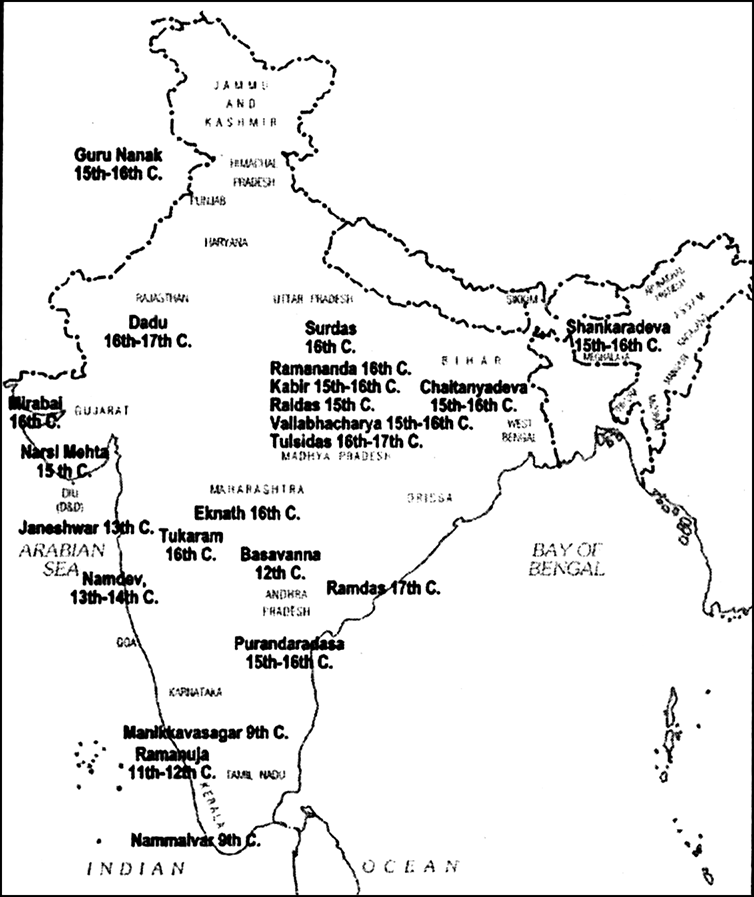A Church in Khambat
This is an excerpt from a farman (imperial order) issued by Akbar in 1598:
Whereas it reached our eminent and holy notice that the Padris (fathers) of the Holy Society of Jesus wish to build a house of prayer (church) in the city of Kambayat (Khambat, in Gujarat); therefore an exalted mandate... is being issued ,... that the dignitaries of the city of Kambayat should in no case stand in their way but should allow them to build a church so that they may engage themselves in their own worship. It is necessary that the order of the Emperor should be obeyed in every way. (CBSE Delhi 2008) Questions:
1. What did the Padris want to do?
2. How did Akbar ensure that their desire was fulfilled?
3. Who guided the Muslim rulers?
4. How was the situation complicated in the subcontinent and how did the rulers adapt to this situation?
1. The Padris (fathers) of the Holy Society of Jesus wished to build a house of prayer (church) in the city of Kambayat (Khambat) in Gujarat.
2. Akbar issued an exalted mandate to his officials. He ordered that the dignitaries of the city of Kambayat should in no case stand in their way. They should be allowed to build a church so that they might engage themselves in their own worship. It was made necessary that the order of the emperor should be obeyed in every way.
3. Theoretically, Muslim rulers were to be guided by the ulama, who were expected to ensure that they ruled according to the Sharia.
4. The situation was complicated in the subcontinent, where there were populations that did not subscribe to Islam. It is in this context that the category of the zimmi, meaning protected (derived from the Arabic word zimma (protection) developed for peoples who followed revealed scriptures, such as the Jews and Christians and lived under Muslim rulership. In India this status was extended to Hindus as well. The Mughals came to regard themselves as emperors of not just Muslims but of all peoples.
India became a part of Islamic world? How rulers who had faith in Islam, maintained balance with their subjects?
Arab merchants frequently came along the parts of western coast in the first millennium C.E. During the same period, people from Central Asialcaroe in subcontinent and settled in the north-western parts. With the advent of Islam and from the 7th century onwards, these regions became a part of that world which is often termed as the Islamic world.
Establishment of Islamic Authority : In 711 AD, an Arab General Muhammad Bin Qasim conquered Sindh and annexed to the domains of Caliph Later on (around 13th century) Turks and Afghans established Delhi Sultanate. Gradually, Sultanatfi spread in Deccan and other parts of subcontinent. Religion of most of the rulers in most of the regions was Islam. This situation remained till the establishment of
Mughal Empire in 16th century. Many regional kingdoms were emerged in the loth century and most of them had faith in Islam.
Maintaining balance with Subjects:
Theoretically, Muslim rulers were supposed to be guided by the ulamas. It was expected from ulamas that they could ensure that they ruled according to the Sharia. But the situation in subcontinent was so complicated because a large section of population did not subscribe to Islam.
In this context zimmi, means protected category, was developed. Zimmi word was used for the people who followed revealed scriptures like Jews and Christians living in the regions of Islamic rulers. These people paid a tax called Jizya. In lieu of that they gained the right of protection by Muslim rulers. Hindus in India were also included among zimmis. That’s why rulers like Mughals regarded themselves as emperors of Muslims and of all peoples.
Actually rulers generally adopted a fairly flexible policy towards their subjects. For example many rulers gave land grants and tax exemptions to Jainas, Hindus, Zoroastrians, Christians and Jewish religious institutions. They also expressed their respect toward non-Muslim religious leaders. These grants were given by many Mughal rulers including Akbar, Aurangzeb, etc.
Mention two features of the protest movement started by Nayanars and Alvars.
(i) The Alvars and Nayanars initiated a movement of protest against the caste system and the dominance of Brahmanas or at least attempt to reform the system. The importance of the traditions of the Alvars and Nayanars was sometime indicated by as the Vedas.
(ii) They travelled from place to place singing hymns in Tamil in praise of their gods.
On an outline map of India show the major bhakti saints and the regions associated with them.

Mention the two earliest Bhakti Movements of Tamil Nadu, giving the main difference between them.
Two earliest Bhakti movements of Tamii Nadu were the Alvars and the Nayanars . Some of the earliest Bhakti movements (C. sixth century) were led by the Alvars (literally) those who are “immersed” in devotion to Vishnu) and Nayanars (literally, leaders who were devotees of Shiva). They travelled from place to place singing hymns in Tamil in praise of their gods.
